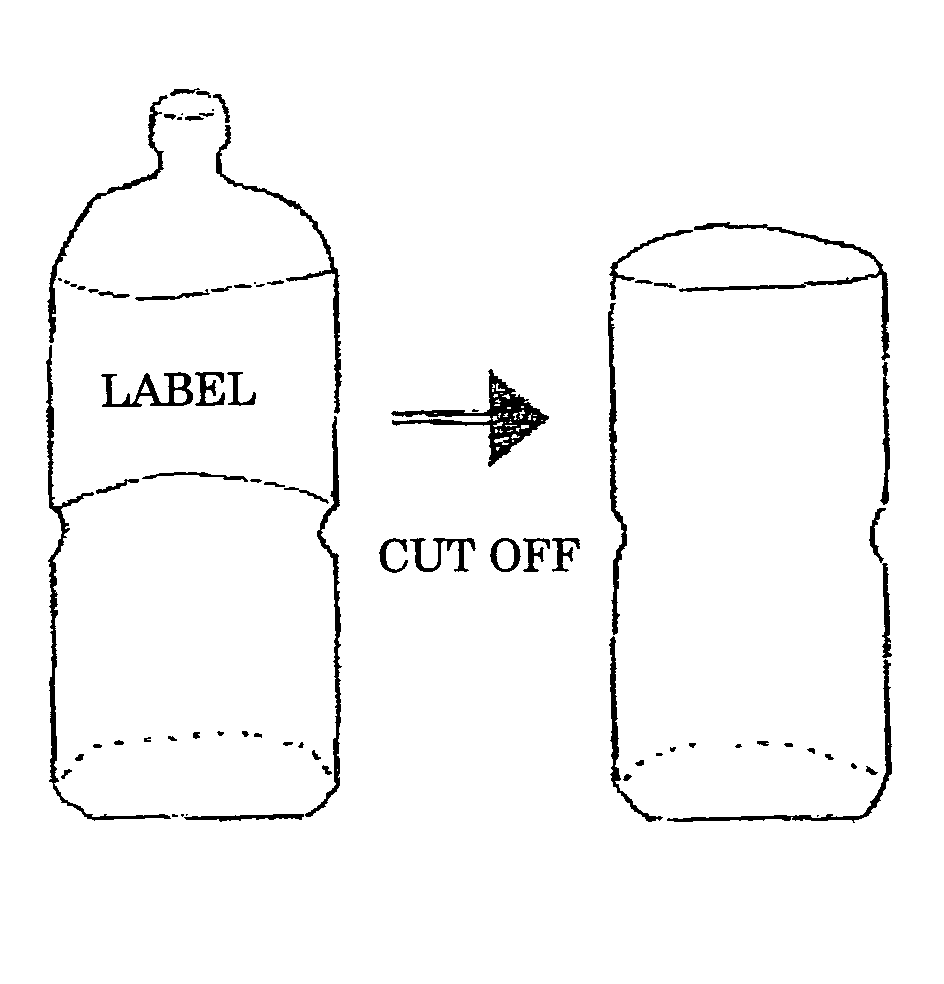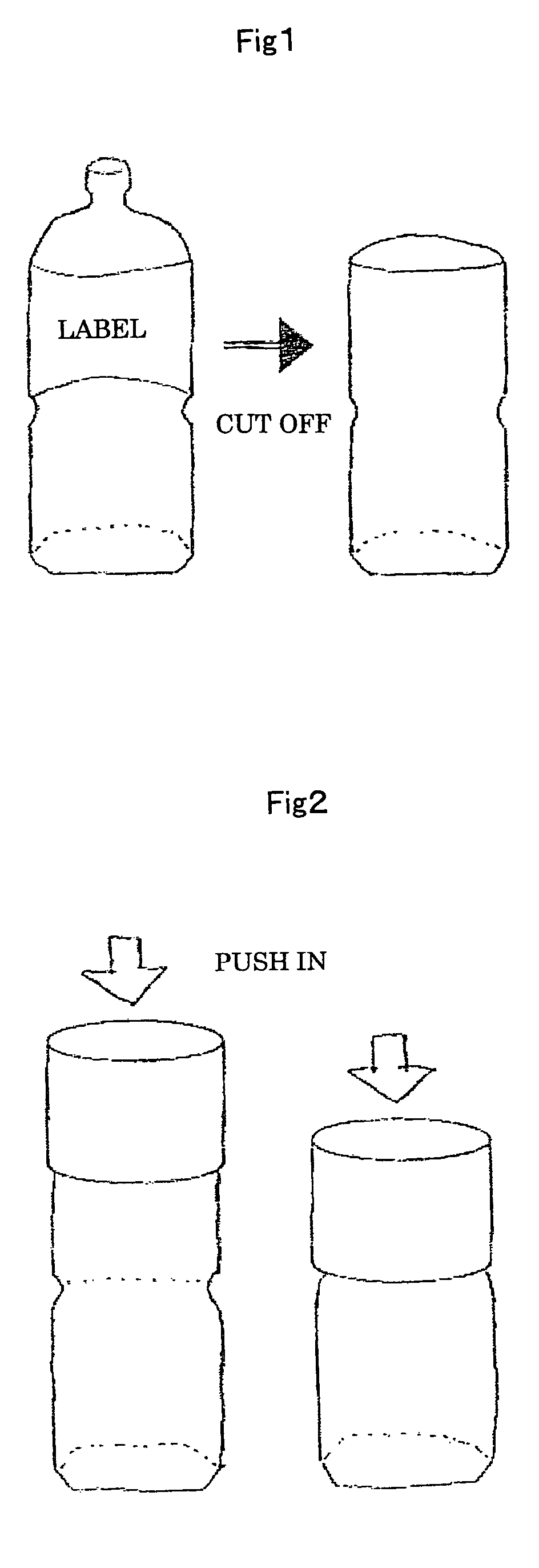Heat-shrinkable polyester-type film
a polyester type, heat-shrinkable technology, applied in the direction of transportation and packaging, other domestic articles, synthetic resin layered products, etc., can solve the problems of inferior heat resistance, label separation from container recycling container, inferior solvent resistance, etc., to prevent goods from clogging, good slip resistance, good transparency and printability
- Summary
- Abstract
- Description
- Claims
- Application Information
AI Technical Summary
Benefits of technology
Problems solved by technology
Method used
Image
Examples
example 1
(1) Polyester Type Resin and Undrawn Film
[0099]A polyester composition containing 40 weight % of polyethylene terephthalate, 50 weight % of a polyester comprising 100 mole % of terephthalic acid, and 30 mole % of neopentyl glycol and 70 mole % of ethylene glycol, and 10 weight % of polybutylene terephthalate was melted at 280° C. and extruded from a T die and quenched by chill rolls to obtain an undrawn film.
(2) Preparation of Coating Solution
[0100]A 30% aqueous solution of IPA containing solid matter of water-based dispersion of a polyurethane resin (Hydran HW 345, manufactured by Dainippon Ink and Chemicals, Incorporated) 61% by weight in the total solid matter, solid matter of a water-based emulsion of polyethylene wax (HYTEC E-4BS, manufactured by Toho Chemical Industry Company, Limited) 30% by weight in the total solid matter, and solid matter of an aqueous antistatic agent solution (TB 214, manufactured by Matsumoto Yushi-Seiyaku Co., Ltd.) 9% by weight in the total solid matt...
example 2
[0102]A heat-shrinkable polyester type film was obtained in the same manner as Example 1, except that a 30% aqueous solution of IPA containing solid matter of water-based dispersion of a polyester resin (TIE 51, manufactured by TAKEMOTO OIL & FAT CO., LTD.) 68% by weight in the total solid matter, solid matter of a water-based emulsion of polyethylene wax (HYTEC E-4BS, manufactured by Toho Chemical Industry Company, Limited) 26% by weight in the total solid matter, and solid matter of an aqueous antistatic agent solution (TB 214, manufactured by Matsumoto Yushi-Seiyaku Co., Ltd.) 6% by weight in the total solid matter was used as the coating solution and the coating amount was changed to be 0.02 g / m2.
example 3
[0103]A heat-shrinkable polyester type film was obtained in the same manner as Example 1, except that an aqueous emulsion of polyethylene wax (HYTEC E-9015, manufactured by Toho Chemical Industry Company, Limited) was used.
PUM
| Property | Measurement | Unit |
|---|---|---|
| shrinkage ratio | aaaaa | aaaaa |
| surface radius | aaaaa | aaaaa |
| width | aaaaa | aaaaa |
Abstract
Description
Claims
Application Information
 Login to View More
Login to View More - R&D
- Intellectual Property
- Life Sciences
- Materials
- Tech Scout
- Unparalleled Data Quality
- Higher Quality Content
- 60% Fewer Hallucinations
Browse by: Latest US Patents, China's latest patents, Technical Efficacy Thesaurus, Application Domain, Technology Topic, Popular Technical Reports.
© 2025 PatSnap. All rights reserved.Legal|Privacy policy|Modern Slavery Act Transparency Statement|Sitemap|About US| Contact US: help@patsnap.com


